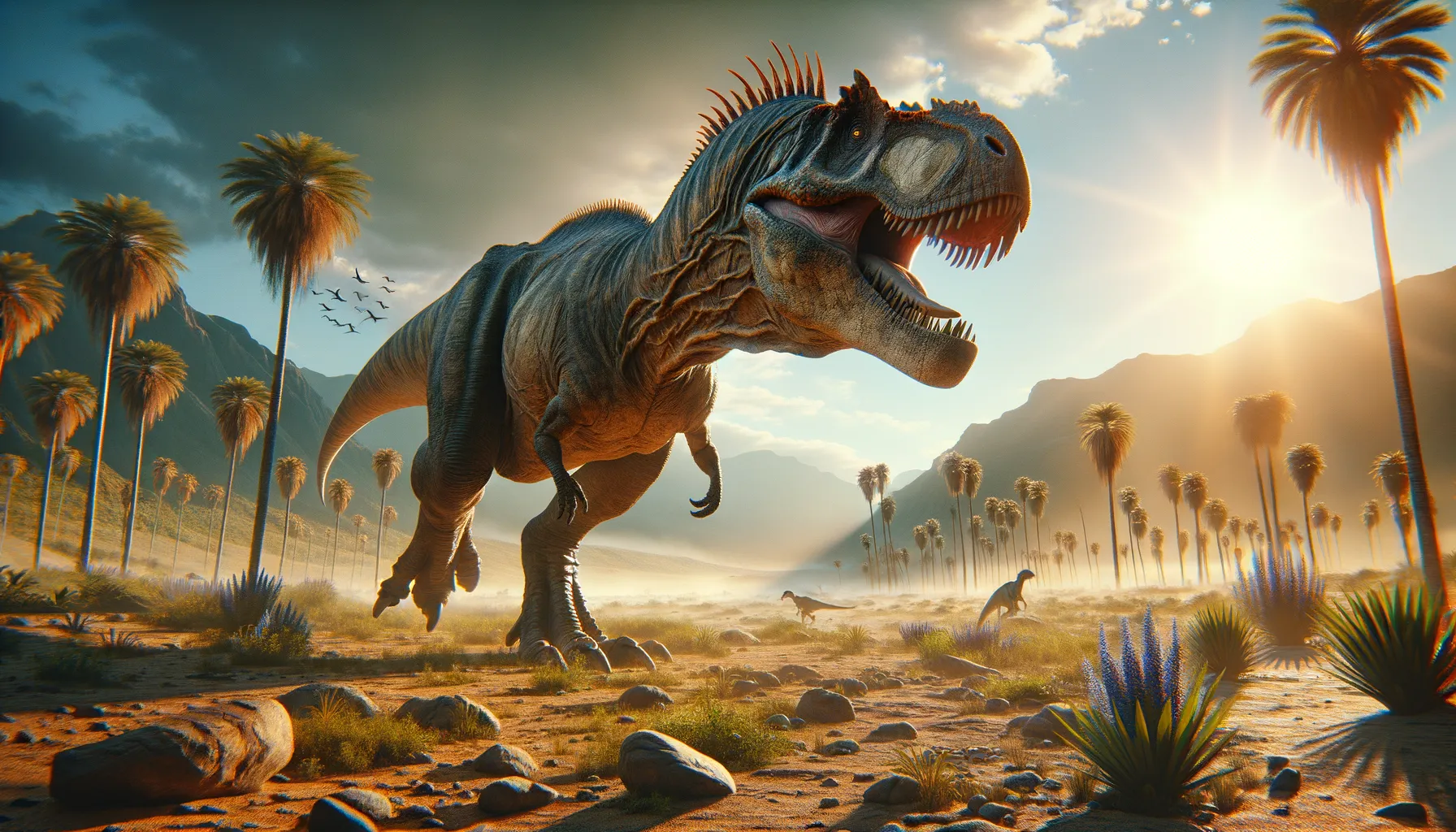
Sauroniops
A fierce predator of ancient Africa.
Period
Cretaceous
Length
Roughly 10 meters long.
Height
About 3 meters at the hip.
Weight
Approximately 2 metric tons.
Sauroniops was a massive theropod dinosaur that roamed the region that is now North Africa during the Cretaceous period. Known from limited fossil remains, primarily a skull fragment, this predator likely shared its ecosystem with other large carnivores. Its name, meaning 'Eye of Sauron', references both its menacing presence and its discovery in the ancient Cretaceous sands of Africa.
Diet
Sauroniops was carnivorous, likely feeding on smaller dinosaurs and large prehistoric marine animals. Its strong jaws and sharp teeth helped it catch and consume prey efficiently.
Hunting
It likely used its powerful limbs and sharp teeth to prey on large terrestrial and marine animals. Sauroniops may have been an ambush predator, relying on stealth and strength to overpower its prey.
Environmental challenges
During the Cretaceous period, Sauroniops faced a dynamic environment with significant climatic changes. The shifting landscapes between lush forests and arid regions offered survival challenges and opportunities. Competition with other large theropods might have prompted Sauroniops to adapt its hunting strategies over time.
Speed
Likely moderate, given its large size.
Lifespan
Estimated to be around 25-30 years.
First discovery
Discovered in Morocco in 2012.
Fun Facts
- Sauroniops is named after the evil eye of Sauron from 'The Lord of the Rings' because of its distinct eye socket feature.
- The dinosaur lived during the Cretaceous period, approximately 95 million years ago, in what is now North Africa.
- Sauroniops was a theropod, meaning it was a bipedal carnivore, similar to the famous Tyrannosaurus Rex.
- The only fossil evidence we have of Sauroniops is a single skull fragment found in 2007 in the Kem Kem Beds of Morocco.
- Despite limited remains, scientists believe Sauroniops was a large predatory dinosaur, potentially reaching lengths of up to 33 feet.
- Its discovery has helped researchers understand more about the diversity of predatory dinosaurs in the region where it was found.
Growth and Development
Sauroniops likely went through a rapid growth phase during its juvenile years, similar to other theropods. Its developmental stages would have required abundant food resources to support its growing body. As it matured, its bone structure and muscle mass would have solidified, enhancing its prowess as a top predator.
Habitat
Sauroniops lived in a region that was likely a mix of coastal and inland environments, affecting its prey selection and hunting tactics. The presence of rivers and floodplains would have provided access to aquatic prey. This habitat diversity allowed Sauroniops to thrive during various stages of its life.
Interaction with other species
Sauroniops shared its environment with other large theropods, which may have led to competition for resources. Possible encounters with herbivorous dinosaurs would have influenced its hunting behaviors. Avoidance or confrontation might have been strategies employed to maintain its territory and access to food.
Natural lifespan
Sauroniops had an estimated natural lifespan of 25-30 years.
Reproduction
Sauroniops likely reproduced by laying eggs, as with other theropods. Parental care strategies, if any, remain speculative but might have included nest guarding. Generational continuity was ensured through surviving offspring reaching maturity.
Social behaviour
Little is known about its social behavior, but it may have been solitary, typical of large theropods. Sauroniops might have come together occasionally for feeding opportunities or during mating seasons. Interaction with other species would depend on instinctive or territorial responses.
Fossil locations
Fossils of Sauroniops have been discovered in the Kem Kem Beds of Morocco. These fossil-rich formations provide evidence of a once-thriving ecosystem during the Cretaceous period. The scarcity of remains makes exact distribution challenging to determine.
